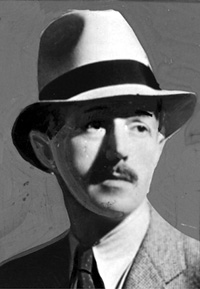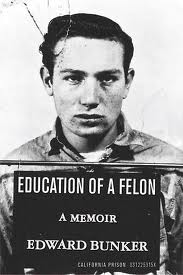You have no items in your cart. Want to get some nice things?
Go shoppingWhenever I get a book—new, secondhand, or borrowed from the library—the first thing I do is read the blurb on the back, assuring me how great the book is and what a good choice I’ve made. The second thing I do is read the biography of the author, though this can often be dull and disappointing. All too often, there follows a list of other books the author has written, mentioned with any awards won. Worse, perhaps, is the brevity of some entries, sometimes just, “This is his first novel.” Not even, “He lives in Wiltshire with his beautiful wife and two cats.” So, you see, what I really want is some biographical detail; it sets the scene for the pages to come.

Some of the best biographical details seem to be from that favourite genre of mine: the American crime novel. Open a book by Dashiell Hammett (1894-1961), one of the fathers of the genre, with such classic novels as The Maltese Falcon or The Thin Man, and you’ll find that the author left school at 14 and became a newsboy, a clerk, a timekeeper, a yardman, a stevedore, and an operative for the famous Pinkerton’s Detective Agency, turning to writing only after serving as a sergeant during the First World War. Rex Stout, another “Grand Old Man” of American crime fiction, who has written over 40 novels featuring the ever-idle Nero Wolfe and his sidekick Archie, including Fer-de-Lance and The League of Frightened Men, claims to have been a store clerk, a book keeper and a hotel manager, and also served in the US Navy as a Yeoman aboard President Roosevelt’s yacht.
Robert Lewis writes some of the blackest crime noir novels recently published, such as The Last Llanelli Train and Swansea Terminal, in which the hopeless private investigator Robin Llewellyn is not only a chronic alcoholic—not unusual for the genre—but also dying from cancer. In Lewis’s biography, he claims he’s been through nearly 20 jobs before becoming a writer, including high-voltage cabler, housing officer, silver service waiter, banker, and welder’s assistant, before saying that he is now 26 and studying as a “mature” student at the University of Wales. Six months in one of his jobs must have seemed like an eternity to him.
 As a crime writer you would, however, be hard pressed to have a better, or more frightening, biography than Edward Bunker. Author of realistic and violent novels such as No Beast So Fierce and Dog Eat Dog, often written from the criminal’s point of view, Bunker writes from experience. One of his biographies on his novels proudly boasts that, following a childhood in various boarding homes and military schools, he became the youngest ever inmate of San Quentin jail in California at the age of 17. Following a parole violation, he became a fugitive, appearing on the FBI’s most wanted list before being recaptured and sent to Folsom prison—you see, that’s the sort of information about an author I want; it certainly beats Wiltshire and the cats. Bunker turned to writing whilst in prison and some years after his release, he came to the attention of film director Quentin Tarantino, and was cast as Mr. Blue in the film Reservoir Dogs. His autobiographies, Mr Blue: Memoirs of a Renegade and Education of a Felon, are certainly enough to persuade you to avoid spending too much time in American prisons.
As a crime writer you would, however, be hard pressed to have a better, or more frightening, biography than Edward Bunker. Author of realistic and violent novels such as No Beast So Fierce and Dog Eat Dog, often written from the criminal’s point of view, Bunker writes from experience. One of his biographies on his novels proudly boasts that, following a childhood in various boarding homes and military schools, he became the youngest ever inmate of San Quentin jail in California at the age of 17. Following a parole violation, he became a fugitive, appearing on the FBI’s most wanted list before being recaptured and sent to Folsom prison—you see, that’s the sort of information about an author I want; it certainly beats Wiltshire and the cats. Bunker turned to writing whilst in prison and some years after his release, he came to the attention of film director Quentin Tarantino, and was cast as Mr. Blue in the film Reservoir Dogs. His autobiographies, Mr Blue: Memoirs of a Renegade and Education of a Felon, are certainly enough to persuade you to avoid spending too much time in American prisons.
If you’ve just come off a creative writing course and you’ve really just written your first novel, then fair enough, you’re going to find it hard to beat some of these biographies. But please, tell me a little about yourself. Neil Gaiman, the author of such masterful and intriguing fantasy works as Neverwhere and American Gods, claims in one of his author biographies to be “a messy-haired white male author trapped in the body of an identical white male author with perhaps even less-tidy hair”. It’s not a lot to go on, but at least it’s a start.




